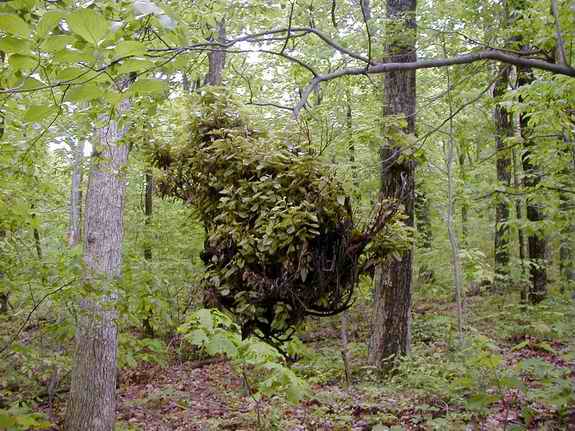|
Common Name: Witches’ Broom (for the appearance of the densely grouped twig structures that form at the end of the branch of an infected tree, like a witches' broom) Botanical Name: hexenbesen (from the German hexe which is from hagazussa meaning witch; the term hag has a similar root; besen is derived from besom, a type of broom made by tying a bunch of twigs to a wooden handle)
Potpourri: A Witches' Broom is a symptom of diseased trees and shrubs which is manifest in the formation of densely clustered twigs in a broom-like mass. Fungi, rust, mites, insects, viruses, bacteria and mistletoe can all be causative agents. The cancer-like growth remains attached to the parent plant for nutrition and support, but otherwise leads an independent existence, branching out vertically instead of horizontally and generally forming leaf buds earlier in the spring than the host plant.
Witches’ brooms do not kill trees directly. However, they do deplete the tree of its nutrients which can slow down growth and reduce the yield. This is a significant problem in the production of cocoa from cacao trees in South and Central America. A fungus (Crinipellis perniciosa) causes witches' brooms to form that will not support pod production, resulting in cacao bean losses of up to 90 percent.
The two most common hosts in the Southern Appalachians are the honeysuckle witches' broom, caused by an aphid, and the hackberry witches' broom, thought to be caused by a combination of a mildew fungus (Sphaerotheca phytophila) and an eriophyid mite. |
